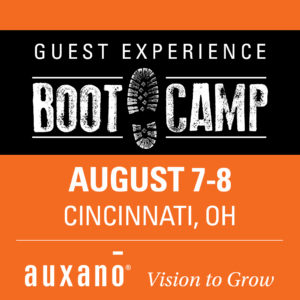
Bringing Out Their Best, Part Two
We all have days during which we feel as though we are running at full speed from the moment the alarm goes off in the morning till the time we stumble into bed late that night. These are the days of deadlines to meet, tasks to accomplish, meetings to lead, and … the list goes on and on.
Do we ever stop to think that our busyness might actually be dangerous?
Busyness can be dangerous, because it causes us to focus on pressing problems rather than on priorities. When that happens, we can miss strategic, once-in-a-lifetime opportunities – like developing the leaders on our teams toward their highest potential.
THE QUICK SUMMARY – Clarity First by Karen Martin
Award-winning business performance improvement and Lean management expert Karen Martin diagnoses a ubiquitous business management and leadership problem―the lack of clarity―and outlines specific actions to dramatically improve organizational performance.
Through her global consulting projects, keynote speeches, and work with thousands of leaders, Karen has seen first-hand how a pervasive lack of clarity strangles business performance and erodes employee engagement. Ambiguity is the corporate default state, a condition so prevalent that “tolerance for ambiguity” has become a clichéd job requirement.
It doesn’t have to be this way.
In Clarity First, Karen provides methods and insights for achieving clarity to unleash potential, innovate at higher levels, and solve the problems that matter to deliver outstanding business results. Both a visionary road map and practical guide, this book will help leaders:
- Identify and communicate the organization’s true purpose
- Set achievable priorities
- Deliver greater customer value through more efficient processes
- Build organization-wide problem solving capabilities
- Develop personal clarity to become a more direct, purposeful, and successful leader
Eliminating ambiguity is the first step for leaders and organizations to achieve strategic goals. Learn how to gain the clarity needed to make better decisions, lead more effectively, and boost organizational performance.
When it comes to leading an outstanding organization, every great leader needs Clarity First.
A SIMPLE SOLUTION
Processes, in their broadest meaning, are a series of actions, changes, or functions that are strung together to produce a result.
They combine human and physical resources in various ways to produce different outcomes. A car is produced using a process that combines parts and labor in specific sequences on an assembly line. An appendectomy is performed using a process that combines medical staff and an operating room in a sequence of actions. All organizations can be thought of as a collection of processes. A process delivers a result. That is, it delivers an output, such as a product or service.
Think of process as a railroad engine. If the engine does not run properly, it does not matter how friendly the conductor acts or how attractive the passenger cars look, the train will still not move and the passengers will not pay their fares.
Process is the engine of clarity.
Everything a business does – in fact, everything in life – occurs as a result of processes. Yet few leaders overtly advocate for process to the extent needed for clarity.
I would argue that one of the most high-impact activities for a leader is to understand and improve the processes under his control.
The degree of detail that an individual needs about the processes that make work happen throughout the organization differs depending on the level at which he or she operates.
Clarity by itself does not make outstanding processes, but no process can reach outstanding levels without absolute clarity in its design, execution, and management.
Well-managed processes are:
- Documented. Not only are the process steps captured, but so are the descriptions of how the work should be performed within each step.
- Current. The documentation reflects the way the work should be performed today, not how it was performed last month.
- Followed. Team members have been trained in the process, and adhere to it until the process is improved.
- Consistently monitored. Process performance is measured against relevant key performance indicators.
- Regularly improved. Processes that consistently meet KPI targets are analyzed to identify performance gaps with the goal of setting new, more aggressive targets, and identify process changes necessary to meet them.
Karen Martin, Clarity First
A NEXT STEP
Begin your journey toward greater process clarity in one area of your organization. Work on the processes in that area to learn about and improve your training methods for designing, documenting, training, measuring, and improving them.
Use the following six steps to guide your development of processes:
- Identify and select the problem to be worked on
- Analyze the problem
- Generate potential solutions
- Select and plan the best solution
- Implement the solution
- Evaluate the solution
Once you have identified a solution and find that it works, continue to use it, evaluating it periodically as needed, replacing it completely when it no longer works.
Pay close attention to the results you reap from greater clarity.
Excerpt taken from SUMS Remix 96-2, issued July 2018.
This is part of a weekly series posting excerpts from one of the most innovative content sources in the church world: SUMS Remix book excerpts for church leaders.
Each issue SUMS Remix takes a practical problem in the church and looks at it with three solutions; each solution is taken from a different book. Additionally, a practical action step is included with each solution.
As a church leader you get to scan relevant books based on practical tools and solutions to real ministry problems, not just by the cover of the book. Each post will have the edition number which shows the year and what number it is in the overall sequence. (SUMS Remix provides 26 issues per year, delivered every other week to your inbox).
> > Subscribe to SUMS Remix <<

Tags: Clarity first, Karen Martin, Process




















